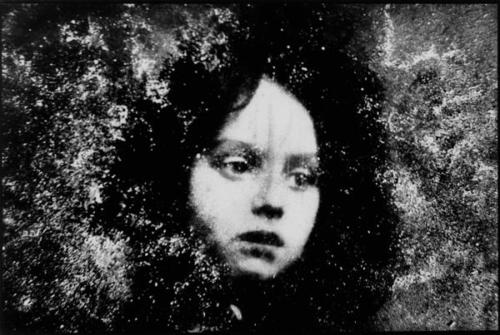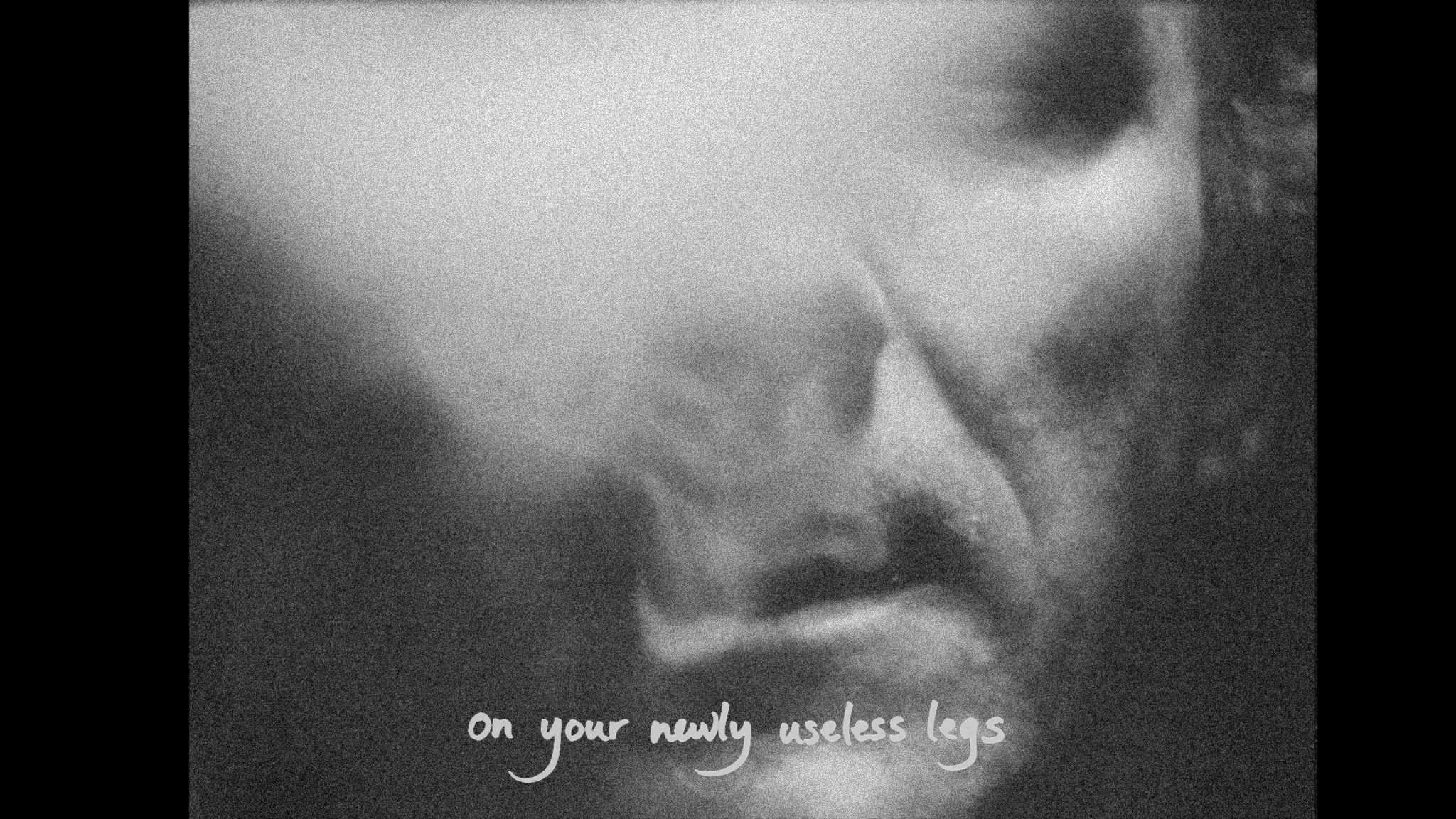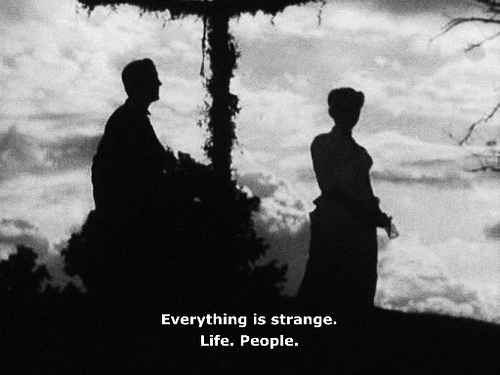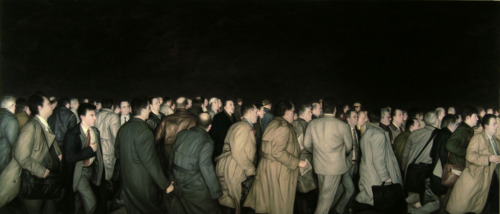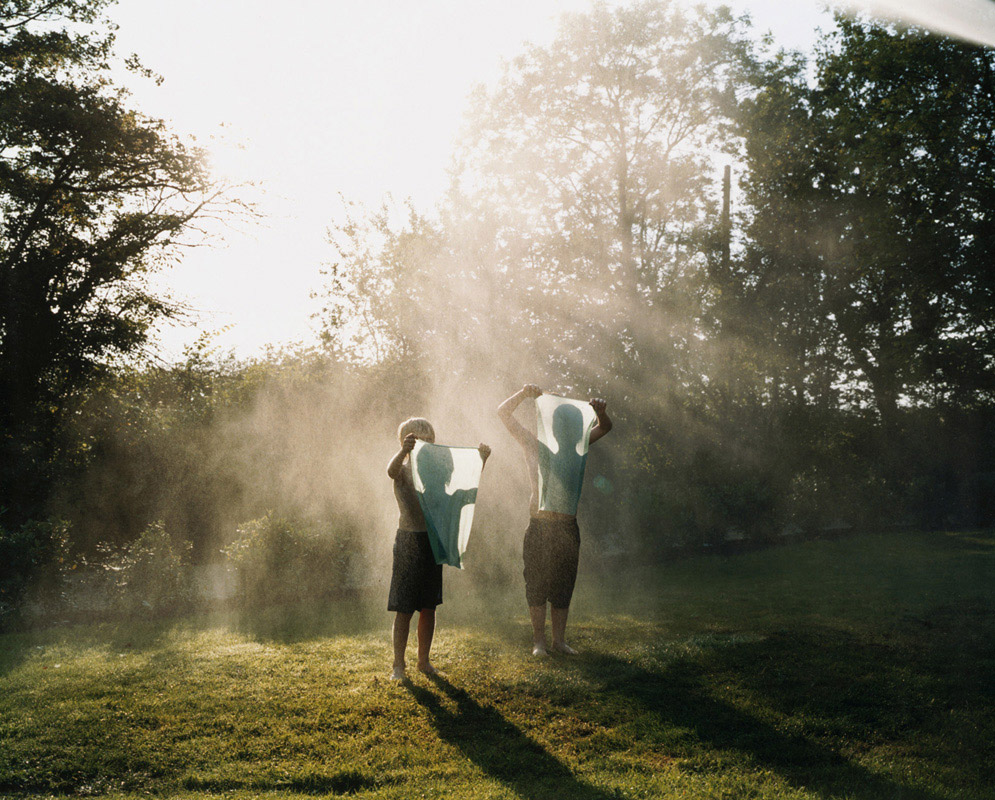(originally published in The Positive Side, Summer 2013)
http://www.catie.ca/en/positiveside
Over the past three decades, Toronto’s Mike Hoolboom has quietly become one of the most unique and respected fringe filmmakers in Canada, creating more than fifty films and videos garnering thirty awards at festivals around the world. A true artist, Hoolboom pushes creative boundaries by refusing to create films that tell us what to think and feel – instead, he wants viewers to have their own unique experiences.
Hoolboom’s film Positiv (1998), the first of his six-part Panic Bodies, explores the dramatic and unsettling impact of HIV on his identiy, his body and his relationships with friends and family. In the top quarter of a four-way split screen, Hoolboom’s handsome face delivers a personal, unsentimental and often witty monologue about HIV, while a montage of intriguing and disorienting images in the remaining three screens symbolically and seamlessly reinforce his perspective. He begins by explaining how he no longer feels at home in his own body. “The yeast in my mouth is so bad it turns all my favourite foods, even chocolate-chocolate chip ice cream, into a dull metallic taste, like licking a crowbar,” he says, staring directly at the camera. “I know then that my body-my real body-is somewhere else, bungee jumping into mine shafts stuffed with chocolate wafers and whipped cream and blueberry pie and just having a good time, you know?” I had the opportunity to talk to Mike about the making of this short film.
Jennifer: You have described the type of movies you make (experimental or fringe films) as difficult movies. Who are they difficult for and why?
Mike: What if I want to share with someone the beauty and terror of a face? And perhaps the stories this face has to tell can wait until after the sheer contact encounter, the way the two sides of this face speak such different truths, as if they were a pair of tectonic plates torn from different continents. Could I make an hour-long movie (would that be long enough?) that would allow people to absorb this face? These kinds of movies, which might resemble friendship, can feel unfriendly. Why is that face still on the screen and why is it looking at me like that? After the viewer has received all of “the information” the picture has to offer, what else becomes possible? There are subgenres of movies dedicated to these questions. Not to mention the lives these movies make possible (if we can imagine that satisfaction happens twice, the first time as picture/wish/fantasy, and the second in its realization).
Mostly people watch movies where the position of the viewer is clear. There is an exacting balance of knowing and not knowing. Where I am, what I know, and where I am going lies in grooves sometimes called genres or motion picture habits that provide comfortable viewing portals. Experimentalist movies, on the other hand, sometimes provide a haven for not knowing. How long does it take to see the crowd of faces you are hosting in your face? And what does it mean to be left on my own to see them, instead of being pushed around and directed? Instead of unifying its audiences, these fringe works can encourage radically individual responses. To each their own. Of course, having to forgo the usual viewer position (which is essentially infantile, the movie parent does all the work while I lie back and am told what to think, and how to react) can make these movie forms appear difficult by comparison.
Jennifer: You made the short film Positiv in 1998 before highly active antiretroviral therapy drugs became available. During this film, you basically let the audience in on what it’s like to have HIV during a time when you probably didn’t expect to live. What did you want to accomplish with this film?
Mike: Positiv was made a couple of years after the cocktail arrived. It was part of the afterlife, the time I was never supposed to have. Perhaps that’s why I appear in the movie. Oh, I’m still here. I had set every watch, reoriented every compass, staked every bet on the endgame. And watched with my doctors the steady decline of T4 cells. The march towards the end was measurable, quantifiable, reliable almost. I had a year left, maybe less, when the new drugs arrived and with them a strange new set of disappointments. How could I forgive myself for outliving the contracted moment, particularly when so many others were dying simply because they were born in the wrong country? I had prepared so well and so long for my death, I didn’t know how to receive the unwanted gift of more and more. I think the movie is a kind of grieving for the death I didn’t have. Though few others might read it that way.
Hoolboom’s new film Buffalo Death Mask takes viewers back to a moment before antiretroviral therapy (ART) became available, when being HIV positive meant certain death. The movie opens to beautiful, haunting music and the grainy black-and-white image of a death mask (a cast of a person’s face following death). Seconds later, a gray human face that resembles the mask appears, alive now and looking at the camera. A conversation begins between Hoolboom and artist Stephen Andrews (both men were diagnosed with HIV in the 1980s). While the two men open up to each other about their shared experience of almost dying, hazy light-drenched images appear onscreen. Andrews (who appeared on the cover of the Summer 2012 Positive Side) says: “I hadn’t anticipated the difficulty of coming back from the brink. It took me three or four years to put Humpty Dumpty back together again. How do you start again from below zero?”
Jennifer: With Buffalo Death Mask what did you want people to understand about those years before ART?
Mike: I had chanced across a roll of film exposed many years ago, showing a meeting of three friends in a small Buffalo apartment. When the footage was slowed down I saw that the light came from their bodies, instead of falling onto them. This was something I had learned how to see in the pre-cocktail years of being positive. Of course, I wasn’t alone in this, many others opened their eyes in exactly the same way, at exactly the same time, like genius Canadian painter Stephen Andrews. He might have shot these figures himself, because the quality of seeing that resides in his paint is just the same. I can imagine Stephen would put it differently, but that’s the cover story I’m offering today. There is a light the body gives off when it’s dying, and perhaps you can only see it when you’re dying, or at least, when you’re dying you feel it in a very particular way. Everything is fading, and aging, and moving towards death, and this gesture is carried in a particular kind of light. All I wanted to do was to show people what this kind of looking, looks like.
Jennifer: Who is your ideal audience for your new film?
Mike: Aren’t ideals recrafted from early authority figures like parents? Perhaps an ideal is a parent who says yes. Or is it a sibling who assents?
Movies are so many things, but also a school for dying. The yoga community has taken this up in earnest – many classes end with what they call the practice of death in savasana, or corpse pose. Cinema is corpse pose. Everyone you see in the earliest films – babies and adults alike – are all dead. From crowd scenes to close-ups, the cinema shows us people moving towards their own end.
Jennifer: Stephen Andrews describes what was unfortunately a common experience for HIV positive people then (watching a beloved partner die), yet your interview with him is often humorous.
Mike: Stephen is very funny! He could make a brick wall convulse with laughter. We touch upon some difficult moments, including the death of his partner Alex Wilson, who he had been with for fifteen years. He talks about getting shingles, and nearly dying, and resenting others who are dying but not as fast as you are, and the whole while we are laughing our faces off. The laughing makes it possible to hold these stories, don’t you find? Despair and depression are also popular options, but there was so much death in that time that we needed to blend up emotional cocktails along with the pharmaceutical ones, and these often included healthy doses of denial, deferral, and gut shaking laughter.
Jennifer: Your films often pair found images with narration and/or with conversations between people. I’d love to know more about your process for selecting these images.
Mike: I only wanted to run the dreamy pictures. I thought they said everything. But when I showed them to friends they said: This is something you can see for yourself in private, like a letter. So I turned reluctantly from the silvery material back into the world and found Stephen.
Jennifer: How many films have you made?
Mike: I make fewer as I get older. After finishing movies I seem to want to refinish them, and this amendment process goes on until I give up and withdraw them from circulation. I’ve made many movies, but only a few are left for public viewing.
Jennifer: Why do you continue to tinker with your films after finishing them?
Mike: It offers a kind of infantile time travel. Could you go back to a moment in your life, and bring with you everything you know now? And while the analog world of film offered material limits, the digital moment opens a potentially endless horizon of reworking. Digital movies don’t end any longer, a certain arrangement is reached, a certain collaborative interval has passed between maker and material, and this is the result. As this work arrives online in decent quality, if work continues to speak to future generations, new authors will continue to rework and remix.
Jennifer: It’s interesting that in place of a copyright warning in your films, you encourage viewers and other filmmakers to steal and use your material. You also use copyrighted material (parts of Madonna’s Truth or Dare, for instance) in your own films.
Mike: Noam Chomsky says that artists should be subsidized for their production so that exhibition can be free – given the amount of downloading at the moment, no-cost culture has already arrived for many. Making pictures is part of what we might add to the commons, in the same way that inventive turns of phrases are added to language.
Jennifer: How old were you when you started making movies?
Mike: Twenty.
Jennifer: What did you love about making films back then?
Mike: Movies offered a single irresistible promise. They would take the place of the life I was too afraid to have.
Jennifer: I read that you made twenty seven films in the six years following your HIV diagnosis. That’s a lot of movies. Now you make fewer movies. Why is that?
Mike: I used to believe in short movies and now I need longer ones. Today’s telephones have recast their users as digital archivists, street photographers and short video makers. My habit pattern is to race against time, and shorts make that too convenient. Now I want to look at pictures that take a year to inhale and another year to exhale. No doubt this will change. While recounting his many years on a UK lit jury, Ted Hughes said that submissions used to be a couple of hand written pages, then more than a dozen as typewriters gained favour, and never less than twenty on a computer. Perhaps we are only expanding to fill our media containers.
Jennifer: Have your reasons for making films changed?
Mike: I’ve made movies for more than three decades now, though it is a medium for which I am particularly ill suited. I am technically inept, in a medium that still values some degree of machine esperanto. And my method is fundamentally unsound: I pick at the edges, slowly filling in the frame from the corners until at last the outline of a figure is revealed at the heart of the matter. This requires a lot of time, and being lost, and taking strange turns and tangents. So much is thrown away. It’s very inefficient, and often what is revealed is so congested and mysterious that it is unreadable to anyone but my most cherished familiars. Or is it alright to make pictures for two or three friends? It makes me wonder how much is enough, how many faces does it take to create an audience?
